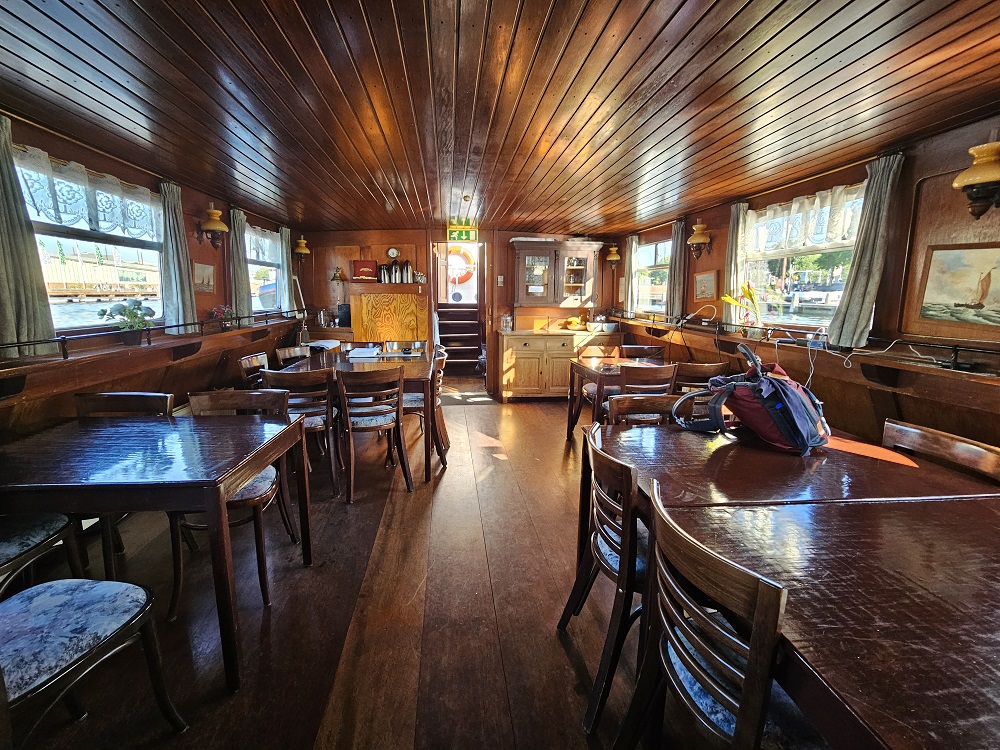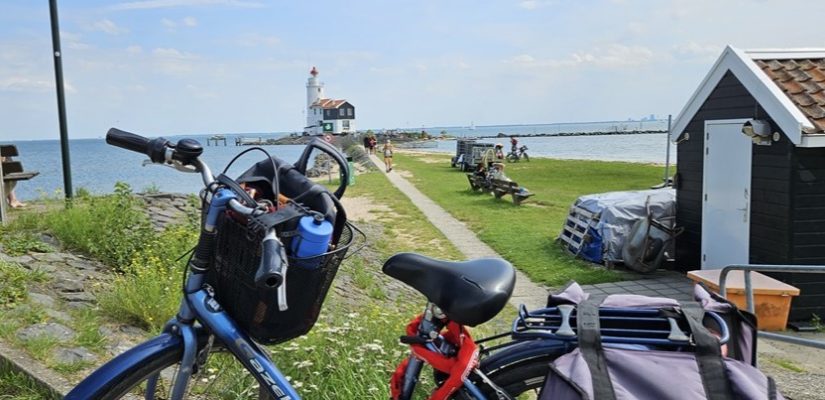
Balade à vélo aux Pays-Bas / Cycling in the Netherlands
Pour qui aime se balader à vélo le long de l’eau, les Pays-Bas sont une destination idéale.
The Netherlands is an ideal destination for those who enjoy cycling along waterways.

On m’avait bien précisé qu’il fallait dire Pays-Bas et non Hollande, qui ne correspond qu’à 2 provinces sur 12 : la Hollande Méridionale et la Hollande Septentrionale où se trouve Amsterdam. Même si tous les noms disent sensiblement la même chose, Hol-Land (pays creux) ou Nederland (basses terres), j’opte pour “Pays-Bas” qui s’applique tellement bien aux paysages que j’ai vus.
I was advised to say Netherlands and not Holland, which corresponds to only 2 of the 12 provinces: South Holland and North Holland, where Amsterdam is located
Even if all the names refer more or less yo the same thing, Hol-Land (hollow country) or Nederland (lowlands), I opt for “Netherlands”, which better describes the landscapes I saw.
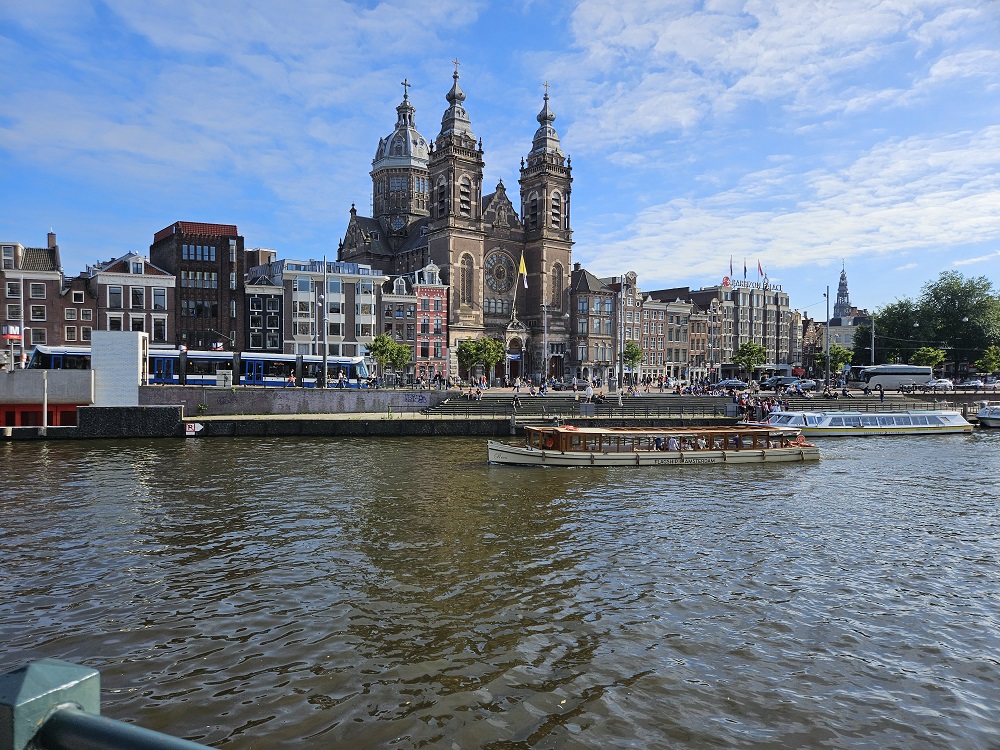
A peine sortie de la gare centrale d’Amsterdam, je prends conscience de la présence de l’eau dans ce pays. Entourée par des canaux et l’IJmeer (lac IJ), la gare, comme beaucoup d’autres bâtiments, repose sur des pilotis de bois enfoncés dans le sable.
As soon as I step out of Amsterdam’s central station, I realise just how much water theres is in this country. Surrounded by canals and the IJmeer (IJ lake), this station, like many other buildings, rests on wooden piles sunk into the sand.
Le pays est bien bas. 25% de son territoire est situé en dessous du niveau de la mer. 17% est composé de polders ; c’est-à-dire de terres gagnées sur l’eau, après avoir été asséchées grâce à des moulins à vent, barrages et canaux. La carte ci-joint indique les territoires situés au-dessus de la mer.
The country is very low lying. 25% of its territory is below sea level. 17% is made up of polders, land reclaimed from the water after being drained by windmills, dams and canals. The map shows areas above sea level.

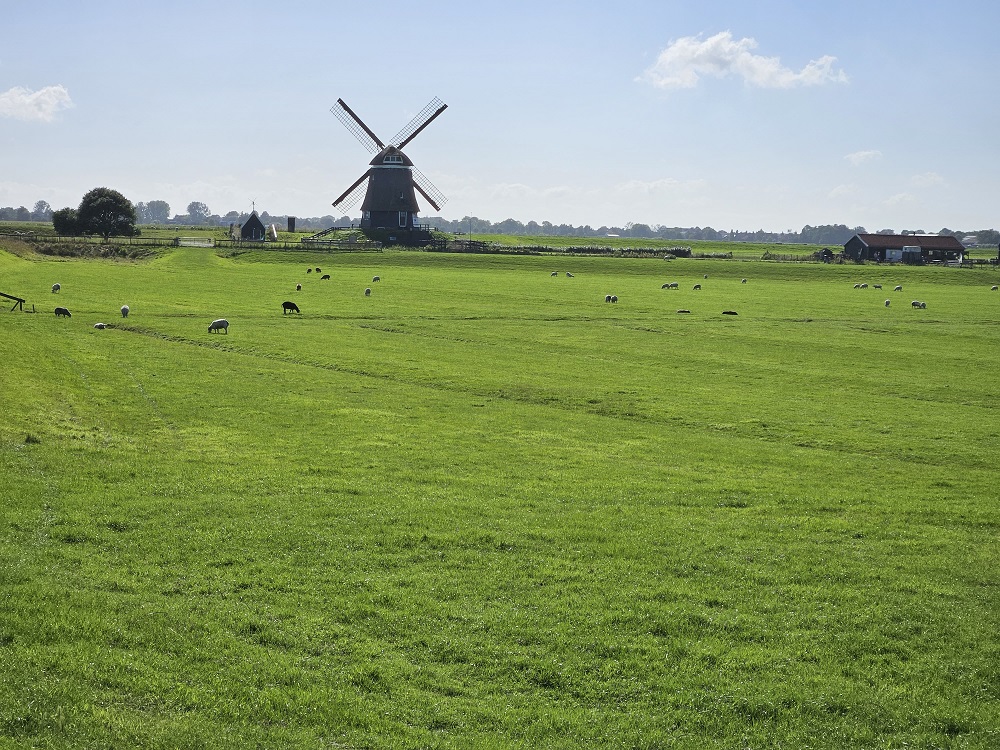
“Dieu a créé le monde, mais les Néerlandais ont bâti les Pays-Bas” ! C’est le proverbe d’un peuple fier d’avoir conquis son territoire mais qui reste inquiet quant aux défis à relever face au changement climatique et à la montée des eaux. Les nombreux travaux en cours sur les digues en témoignent.
“God created the world, but the Dutch built the Netherlands”§ This is the proverb of a people who are proud to have conquered their territory, but who remain concerned about the challenges of climate change and rising sea levels. The numerous works underway on the dykes bear witness to this.
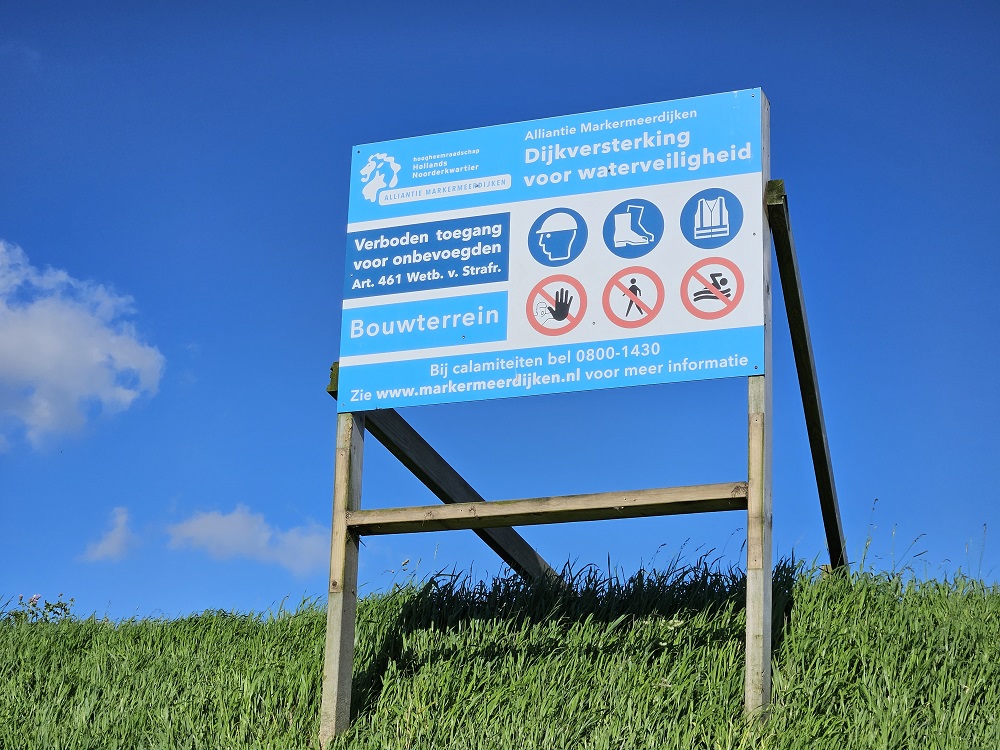
Je commence par découvrir à pied, le centre d’Amsterdam, essayant de me repérer parmi ses canaux concentriques et rêvant devant les allers et venues des bateaux.
I begin by exploring the centre of Amsterdam on foot, trying to find my way around the concentric canals and dreaming before the boats coming and going.
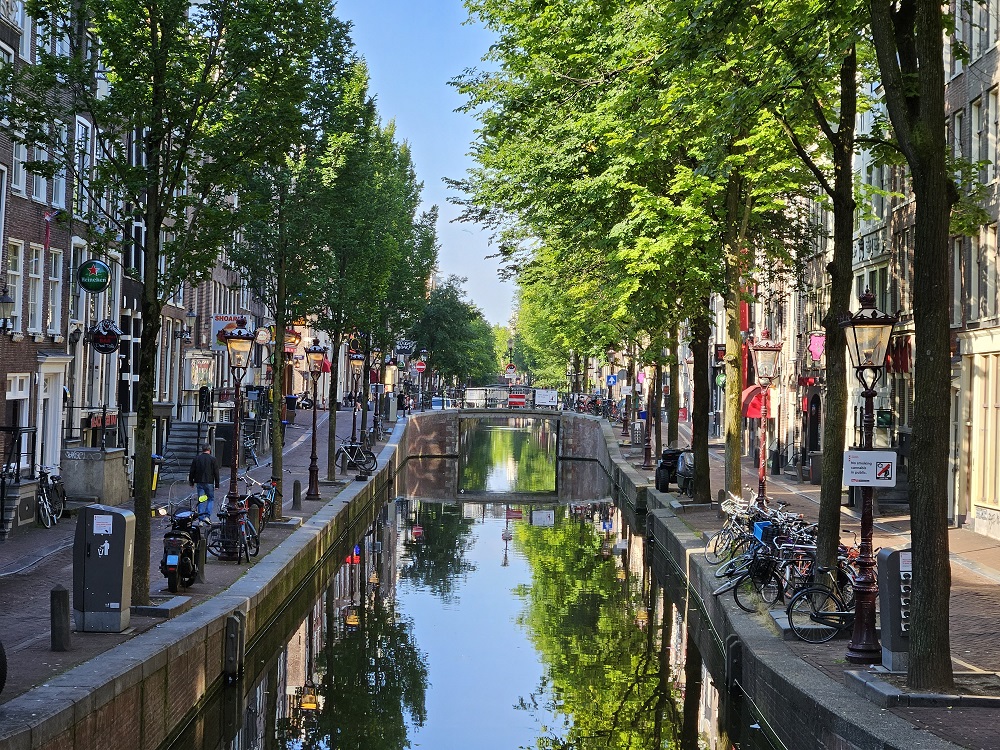
Je prends le temps d’admirer l’enchainement des façades des maisons qui face à la rareté des terres, sont construites tout en hauteur. Très étroites, les meubles ne peuvent être montés par leurs escaliers abrupts. Les déménagements se font par l’extérieur, grâce à une poulie, installée en haut des maisons. Certaines sont même inclinées vers l’avant afin d’éviter d’abîmer les étages inférieurs, lors de la montée des meubles.
I take the time to admire the succession of house facades, which, given the scarcity of land, are built very high up. The steep staircases are very narrow, making it impossible to take furniture up them. Hence, removals are carried out from the outside, using a pulleys installed at the top of the houses. Some are even tilted forward to avoid damaging the lower floors when the furniture is being lifted.

Partant d’Agen, j’ai hésité à amener mon vélo dans le train, mais ne pouvant réserver avec certitude une place pour lui, j’ai préféré en louer un sur place chez A-bike Rentals & Tours.
Starting from Agen, I hesitated bringing my bike on the train, but as reservation for it couldn’t be guaranteed, I preferred to hire one locally from A-bike rentals & Tours.

C’est maintenant le moment de découvrir ma capacité à m’adapter à cette ville et à m’intégrer dans le flux de vélos. Heureusement, mon repérage à pied me facilite la tâche. Rapides mais très respectueux des règles de circulation, les cyclistes locaux me donnent une sacrée leçon de cohabitation entre piétons et cyclistes. Quant aux touristes comme moi, on peut nous repérer au pied de panneaux à essayer de déchiffrer le sens du message.
Now it’s time to find out how well I can adapt to this city and fit in with the flow of bikes. Fortunately, having already explored on foot made the task easier. Fast but very respectful of traffic rules, the local cyclists show me the art of coexistence between pedestrians and cyclists. As for tourists like me, we can be spotted at the foot of signs trying to decipher them.

Lors de mes promenades, j’ai un vrai coup de cœur pour le quartier Oosterdock, situé à proximité de la gare. De magnifiques voiliers historiques, parfaitement entretenus, font face au musée maritime et à une réplique visitable, d’un trois mats « Amsterdam » du XVIIIème. Je plonge ainsi dans l’époque de l’essor du commerce maritime dominé par la compagnie néerlandaise des Indes.
During my walks, I fall in love with the Oosterdock district, located near the station. Magnificent, perfectly maintained historic sailing ships opposite the maritime museum and a visitable replica of an 18th-century three-masted “Amsterdam”. This takes me back to the heyday of maritime trade, dominated by the Dutch East India Company.

Du toit terrasse du musée des sciences Némo, situé juste à côté, je profite d’un magnifique panorama sur la ville.
From the roof terrace of the Nemo Science Museum nearby, I enjoy a magnificent panoramic view of the city.
Pour compléter cette immersion dans ce quartier, j’ai réservé une cabine sur le bateau Anna Maria II, point de vue idéal pour profiter du coucher de soleil.
To complete my immersion in this district, I booked a cabin on the Anna Maria II boat, an ideal vantage point from which to enjoy the sunset.
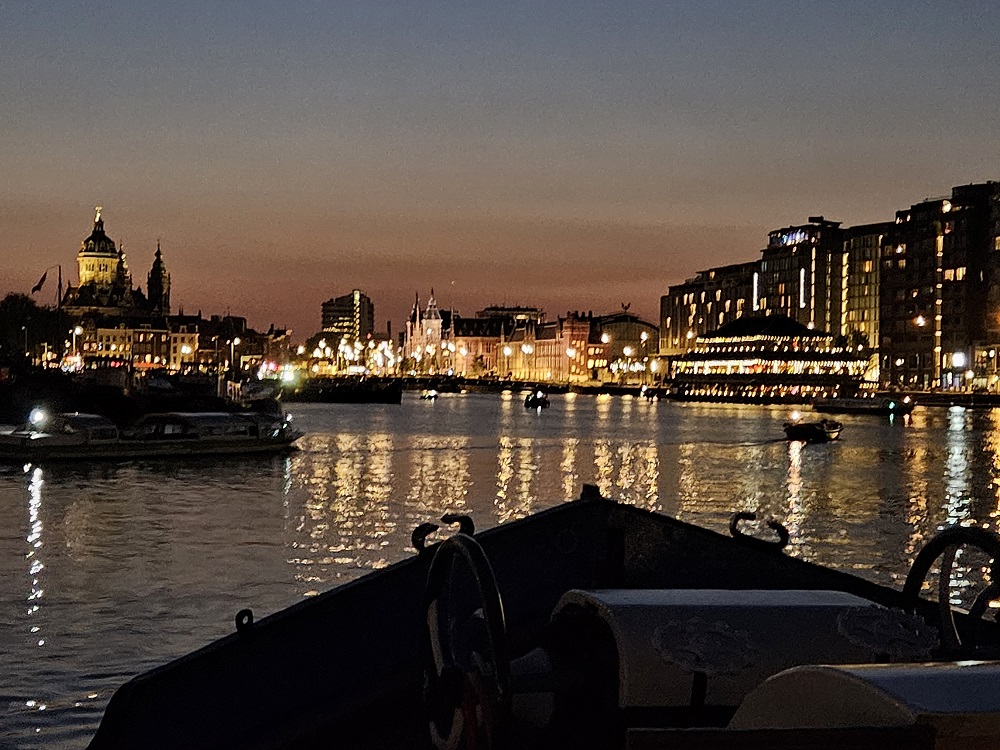
Il est temps maintenant de quitter Amsterdam pour découvrir à vélo la province en longeant les digues le long du Markermeer, jusqu’à Hoorn. Fermé par une digue, il est devenu une mer intérieure d’eau douce.
Now it’s time to leave Amsterdam and explore the province by bike, cycling along the dikes from Markermeer to Hoorn. Closed off by a dike, it has become an inland freshwater sea.
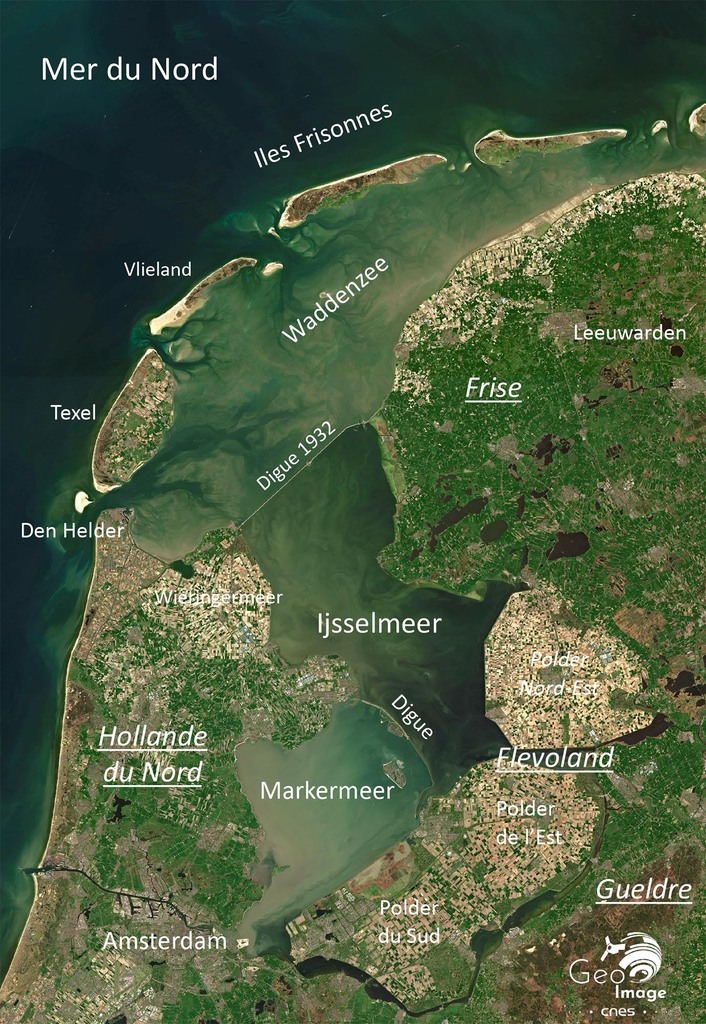
Sur ce territoire très plat, le vélo est roi et la bicyclette est reine puisque l’expression « Petite reine » proviendrait de la reine Wilhelmine. Succédant en 1890 à son père à l’âge de 10 ans, elle avait l’habitude de se déplacer dans son royaume avec sa bicyclette. En 1898, la voyant parcourir Paris à vélo, les journaux subjugués la surnommèrent “La Petite Reine”.
On this very flat land, the bicycle is both king and queen, since the expression “Little Queen” comes from Queen Wilhelmina. Succeeding her father in 1890 at the age of 10, she used to get around her kingdom on her bicycle. In 1898, when the newspapers saw her cycling around Paris, they nicknamed her “The Little Queen”.
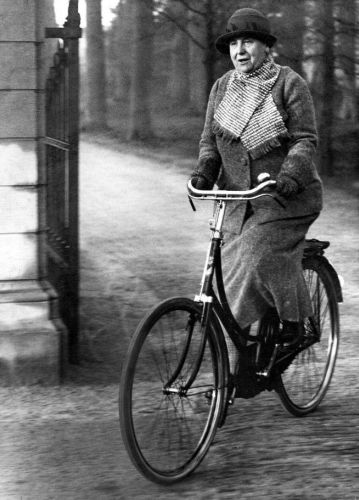
Ici, c’est tellement simple de se déplacer à vélo. Une carte des pistes et les panneaux suffisent à se repérer. Pédaler devient alors un vrai plaisir !
It’s so easy to get around by bike here. A map of the routes and the signs are all you need to find your way around. Pedalling becomes a real pleasure!

Les paysages entre mer et campagne sont magnifiques. La vie semble si paisible dans les villages longeant Markermeer. Bien que les travaux ne permettent pas de pédaler sur les digues, j’y accède à pied pour découvrir à quel point le niveau des terres est inférieur à celui de la mer.
The landscapes between sea and countryside are magnificent. Life seems so peaceful in the villages along the Markermeer. Although the dykes are not suitable for cycling because of construction work, I am able to walk along them to see just how much lower the land is than the sea.
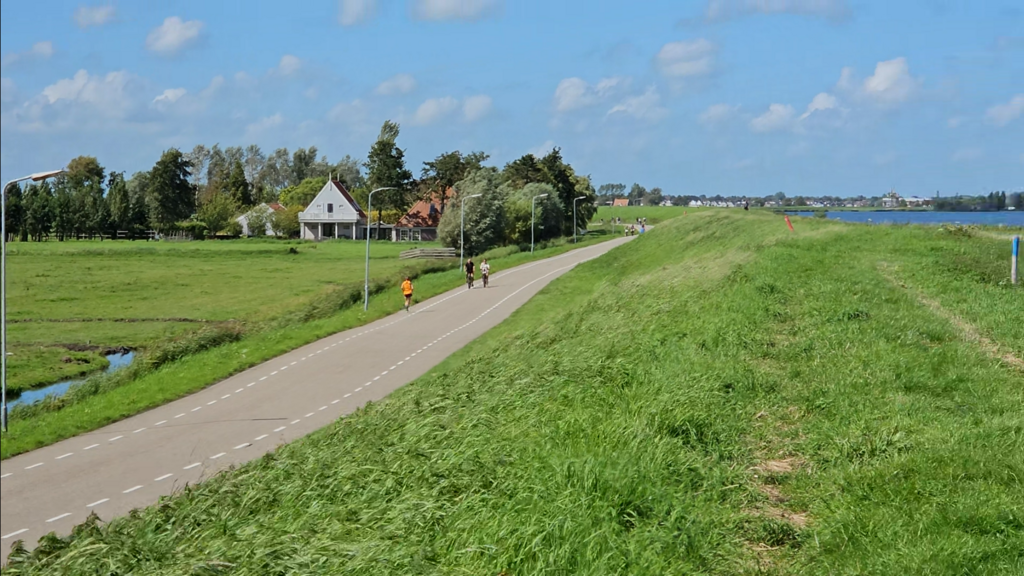
La presqu’ile de Marken vaut bien un détour. C’était une ile jusqu’à la création d’une digue la reliant à la terre. Quand les moines qui l’occupaient jusqu’au XIVeme siècle, l’abandonnèrent aux inondations, l’agriculture fut remplacée par la pêche.
The Marken peninsula is well worth a visit. It was an island until a dike was built linking it to the mainland. When the monks who occupied it until the 14th century abandoned it to flooding, farming was replaced by fishing.
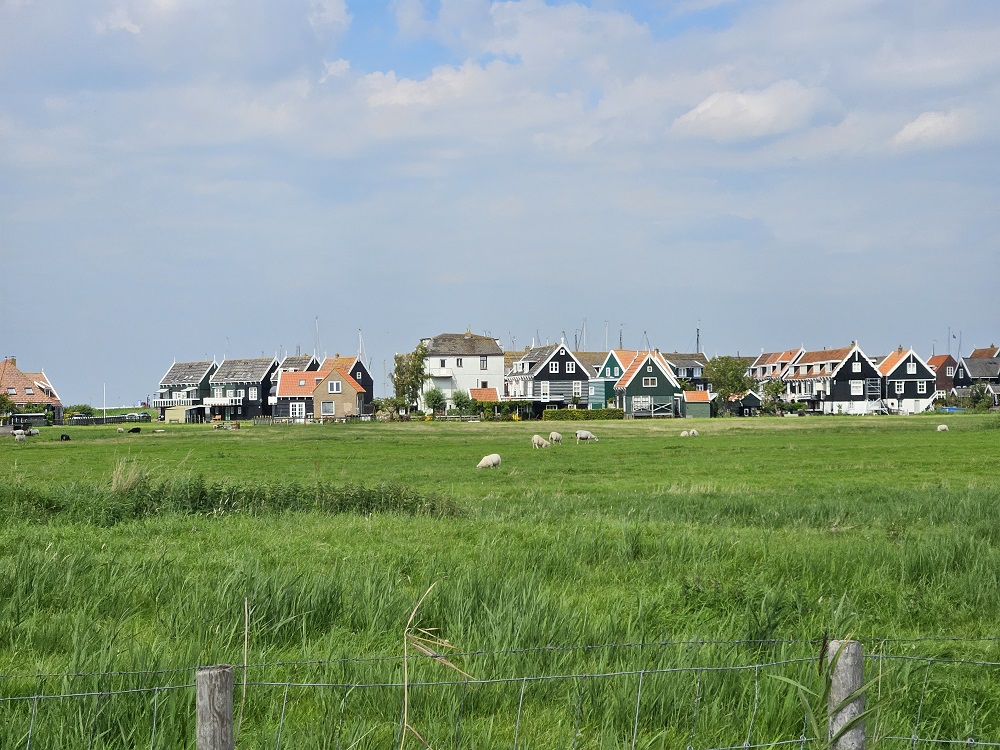
Même si aujourd’hui, moutons et vaches font partie du paysage, son ravissant petit phare témoigne de ce passé.
Even though sheep and cows are now part of the landscape, its delightful little lighthouse bears witness to this past.
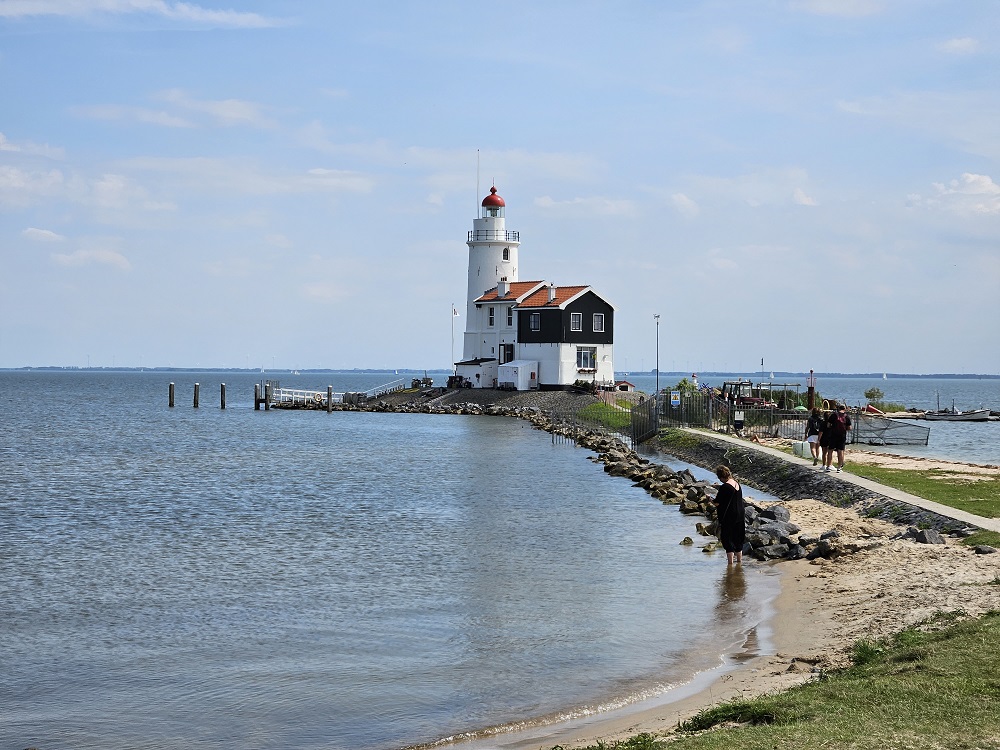
Direction maintenant Den Ilp, à l’intérieur des terres, pour une étape au Café De Drie Zwanen. L’ambiance est chaleureuse et la cuisine « faite maison » est un vrai régal ! Le lendemain matin, en attendant la fin d’une grosse pluie, Karin mon hôte, me raconte l’histoire de ce café où se côtoient plusieurs générations.
I am now heading inland to Den Ilp, for a stopover at Café De Drie Zwanen. The atmosphere is warm and welcoming and the home-cooked food is a real treat! The next morning, while waiting for a heavy downpour to pass, Karin, my host, tells me the story of this café, frequented by different generations.
Par un nouveau chemin, encore plus beau, je reprends la direction des digues, empruntant tour à tour, un bac, un pont tournant, un pont levant …
Following a new, even more beautiful path, I head back towards the dykes, taking in turn a ferry, a swing bridge, a lift bridge …
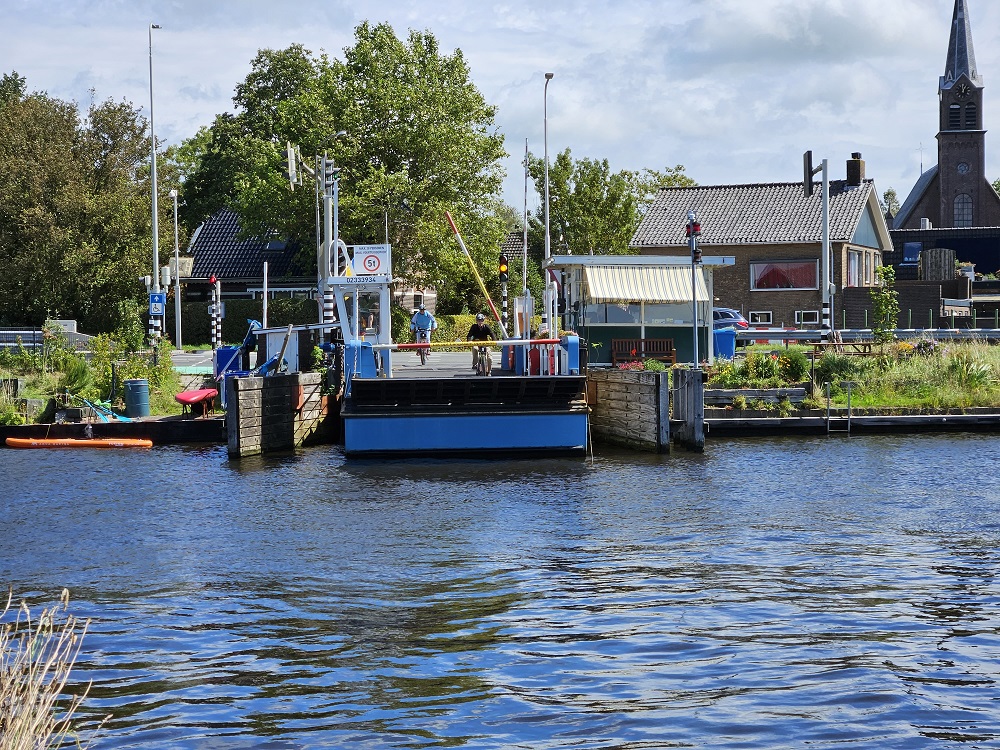
Le village de Monnickendam est une petite pépite. Créé par des moines, il leur doit son nom « la digue des moines ».
The village of Monnickendam is a little gem. Created by monks, it owes its name to them: “the monks’ dike”.

Après avoir visité son église Saint Nicolas, constituée de boiseries magnifiques, son charmant petit port, très fréquenté apparait au bout de petites rues. C’est certain, la prochaine fois, j’y dormirai.
Once you’ve visited the beautifully panelled church of St Nicholas, you’ll come across the charming little harbour at the end of the narrow streets. I’ll definitely be staying there next time.
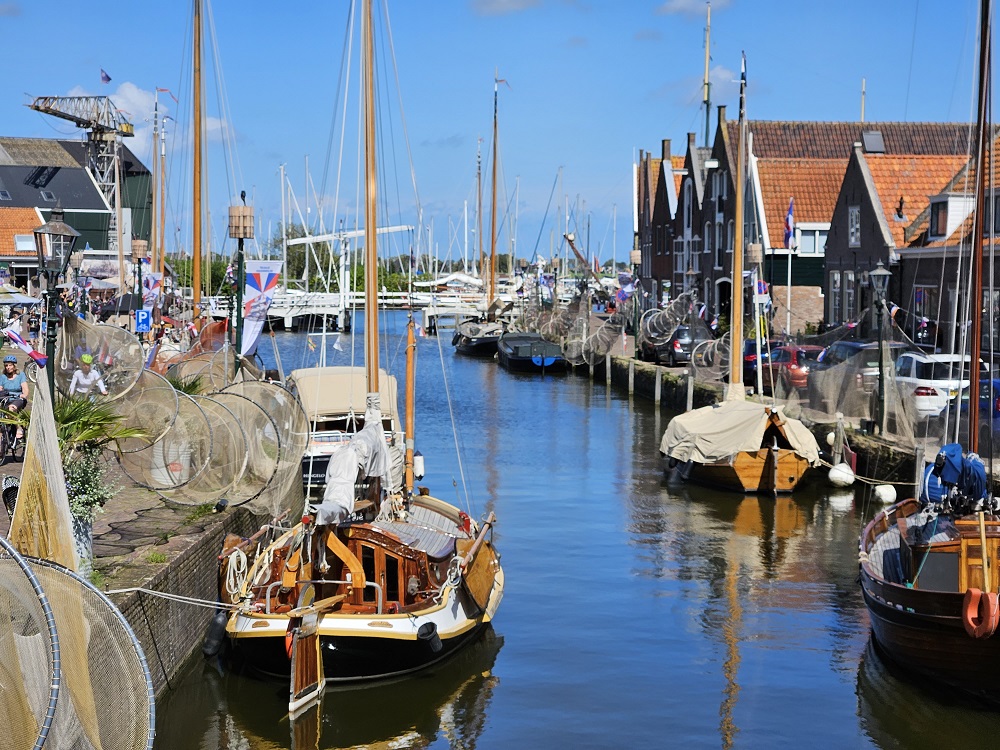
Pour rejoindre Hoorn, je longe des digues de plus en plus hautes et traverse de nombreux villages, certains très touristiques, d’autres comme Edam plus apaisants.
To reach Hoorn, I follow the ever-higher dykes and pass through a number of villages, some very touristy, others like Edam more peaceful.
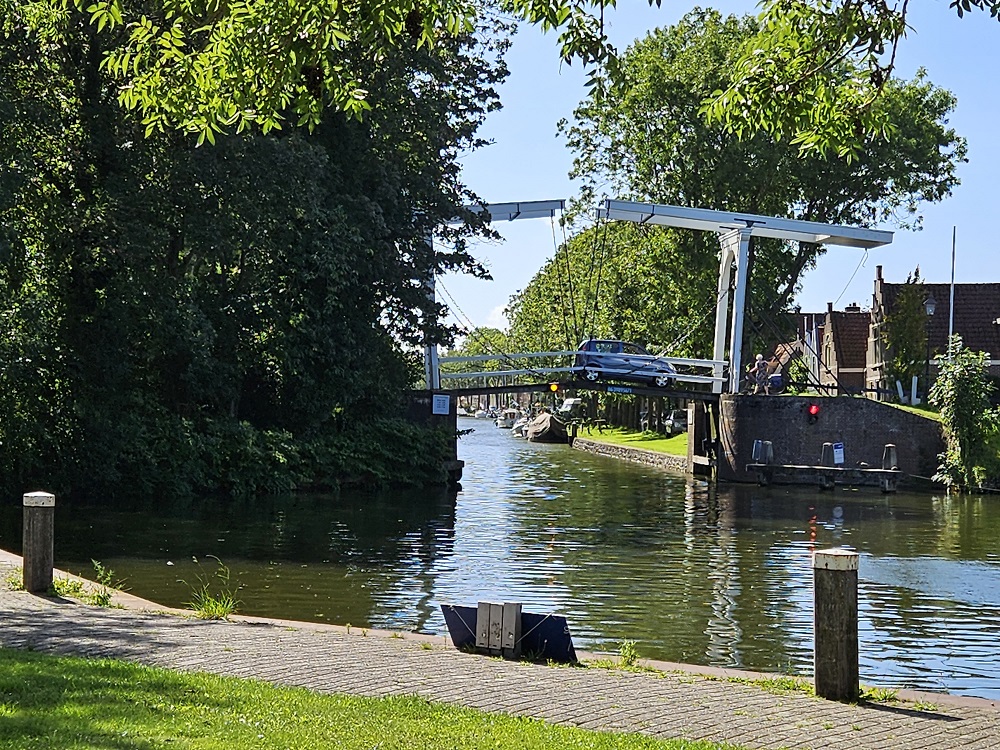
Au port de Hoorn, ma ville étape, les voiliers historiques sont vraiment impressionnants et comme je le constate le lendemain, ils ne restent pas à quai. J’assiste à leur départ, en rêvant d’être à bord.
In the port of Hoorn, my stopover town, the historic sailing ships are truly impressive and, as I found out the next day, they don’t stay docked. I watched them depart, dreaming of being on board.
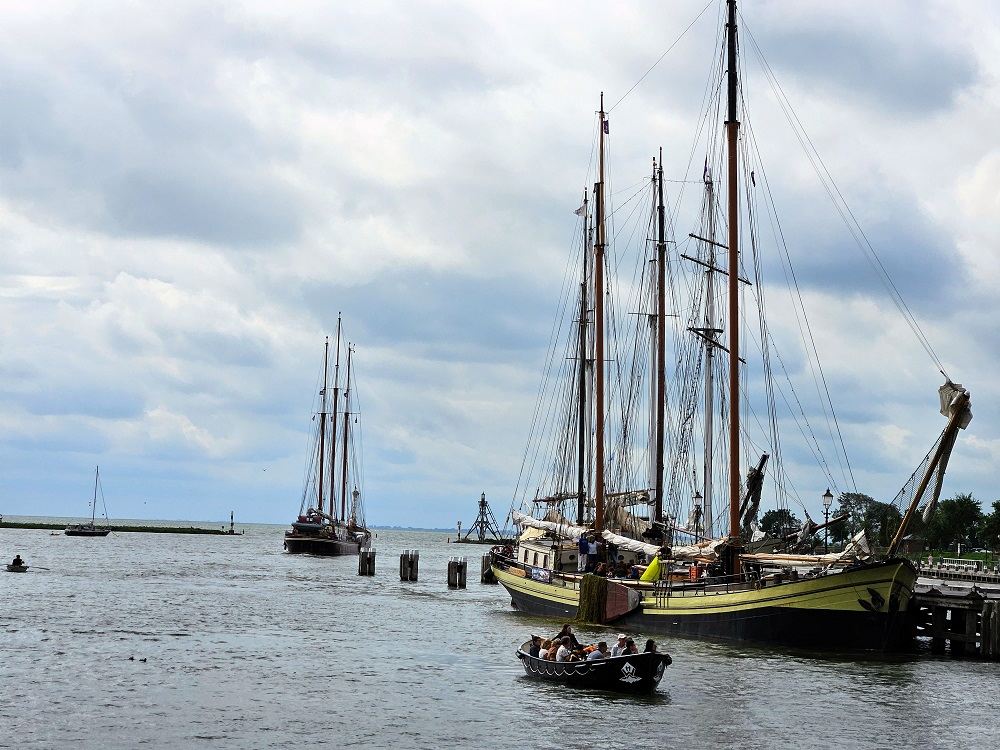
Pour rejoindre Haarlem à l’ouest d’Amsterdam, je prends le train. Ici, les ascenseurs sont suffisamment grands pour changer de quai avec son vélo. Si cela pouvait être pareil en France !
To get to Haarlem to the west of Amsterdam, I take the train. Here, the lifts are big enough to enable you to change platforms with your bike. If only things were the same in France!
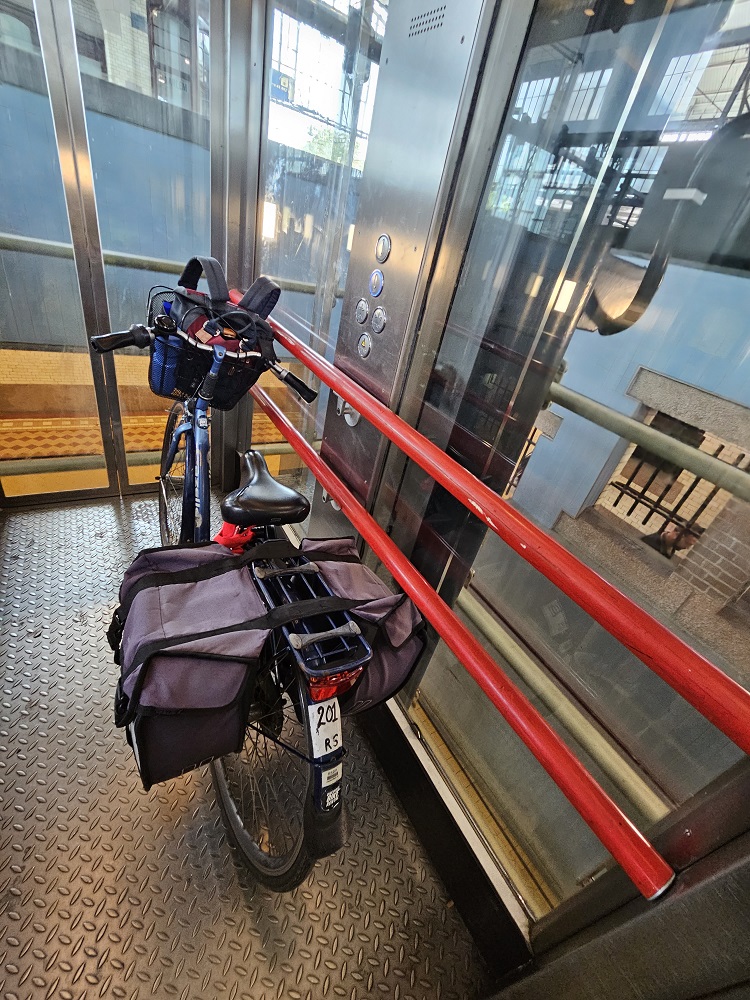
Au-delà de son centre historique, Haarlem est un point de départ idéal pour découvrir à vélo les plages de la mer du Nord.
As well as its historic centre, Haarlem is an ideal starting point for exploring the beaches of the North Sea by bike.
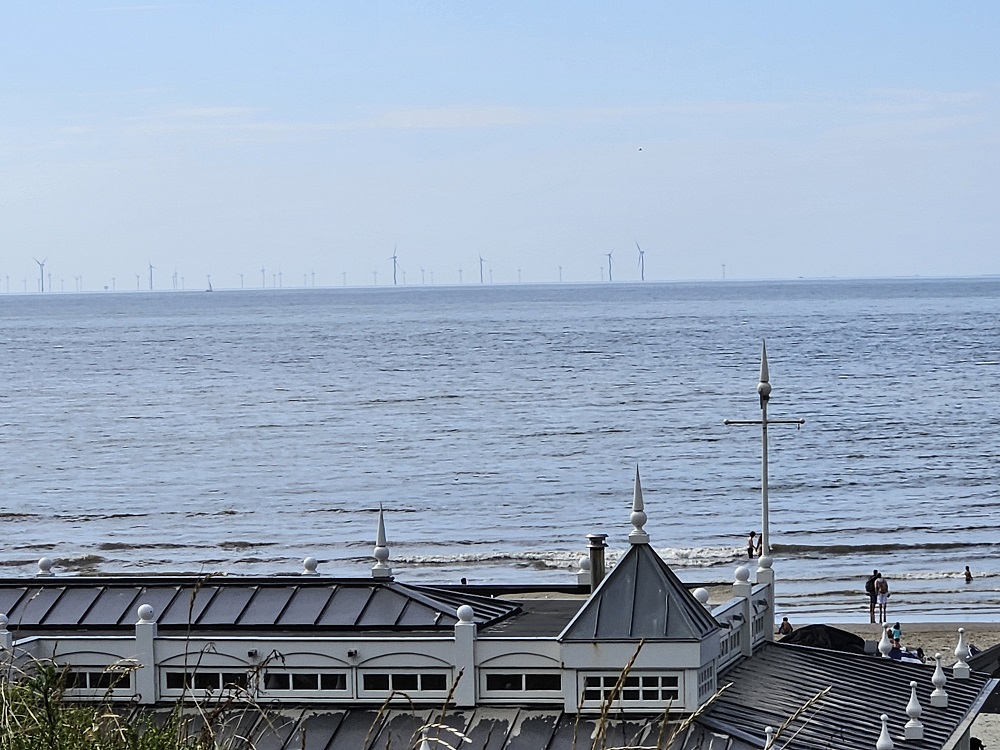
Chaque accès aux plages a son parking à vélos. J’y laisse le mien avec mes affaires dans mes sacoches sans craindre qu’on ne me les vole. Je rentre dormir à Haarlem.
Each beach access has its own bike park. I leave mine there with belongings in my saddle bag without fear of them being stolen. Back to Haarlem for the night.
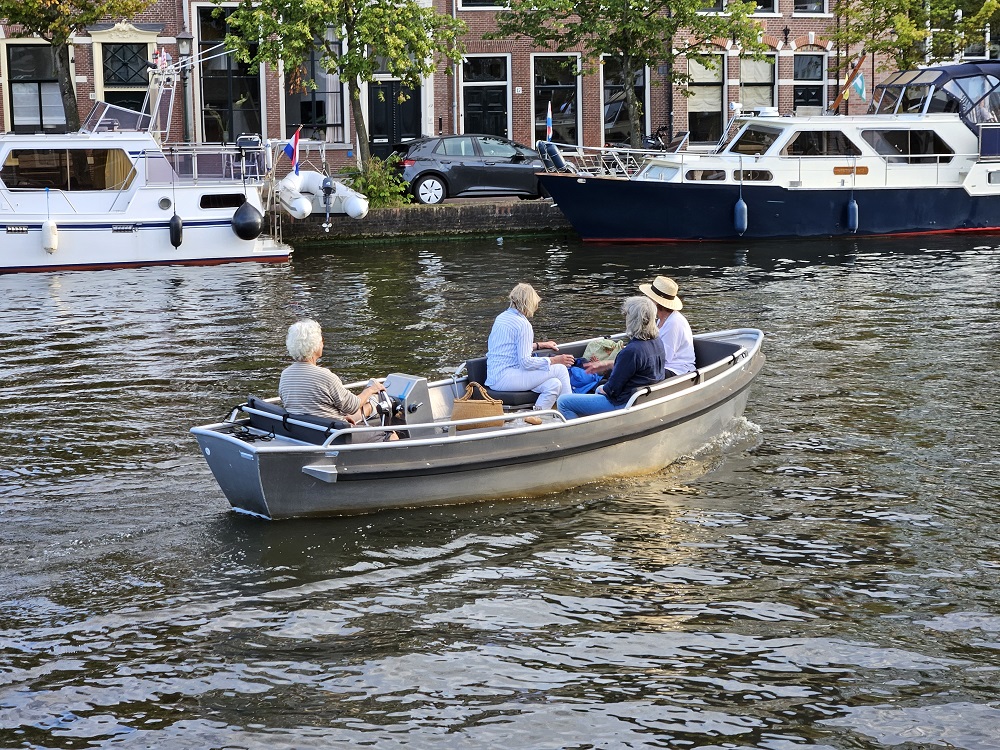
Il faut maintenant rentrer. Amsterdam n’est qu’à 20 km de Haarlem, bien trop près pour ma dernière journée. Alors cap au nord pour profiter jusqu’au bout de ce pays où tout le monde semble si heureux à vélo.
Now it’s time to head back. Amsterdam is only 20 km from Haarlem, far too close for my last day. So I’m heading north to make the most of this country where everyone seems so happy on a bike.
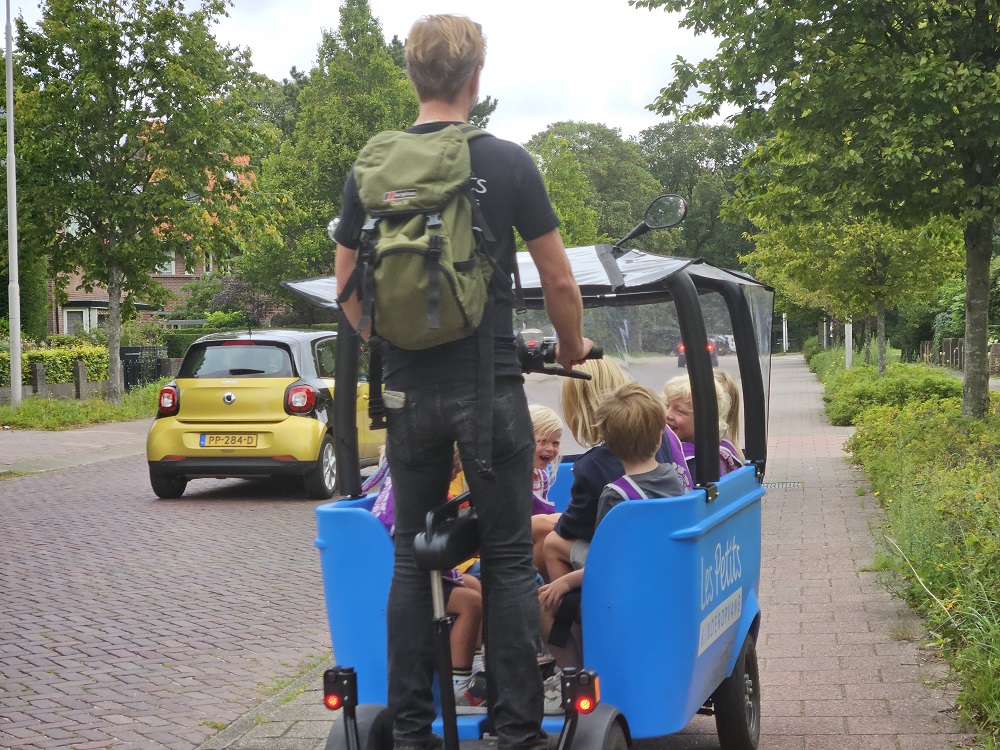
Je remercie pour ses conseils Séverine Fain, artiste peintre, qui a habité 30 ans aux Pays-Bas avant de s’installer en Bretagne.
Pour en savoir plus : le livre Pays-Bas, les pieds sur terre de Gérald de Hemptinne sur l’histoire et la culture des Pays-Bas, et l’article de Géoimage sur Pays-Bas, Le pays des polders aux défis des changements globaux
I’d like to thank Séverine Fain, a painter who lived in the Netherlands for 30 years before moving to Brittany, for her advice.
For more information: the book Pays-Bas, les pieds sur terre by Gérald de Hemptinne on the history and culture of the Netherlands, and the Geoimage article.

Bonnes adresses :
Amsterdam : nuit sur un bateau Anna Maria II , ambiance sympa, assez proche de la gare. Location de vélo A-bike rental & Tours , grand choix de vélos sur plusieurs sites. Restaurant extérieur sur le toit du musée Némo, superbe panorama.
DenIlp : Nuit à Het Zwanennest et diner au café De Drie Zwanen, accueil chaleureux dans une ambiance particulière
Horn : Nuit à Hôtel de Magneet calme et bien placé
Haarlem : Café Mooie Boules , dans le quartier des docks, pour jouer aux boules ou profiter du soleil au bord du canal
Useful addresses :
Amsterdam: night on an Anna Maria II boat, nice atmosphere, fairly close to the station. A-bike rental & Tours , wide choice of bikes at several locations. Outdoor rooftop restaurant of the Nemo Museum, superb panorama.
DenIlp : Overnight at Het Zwanennest and dinner at café De Drie Zwanen, a warm welcome in a special atmosphere.
Horn: Overnight at Hotel de Magneet, quiet and well-located.
Haarlem: Café Mooie Boules, in the docklands district, for a game of boules or sunbathing by the canal.
